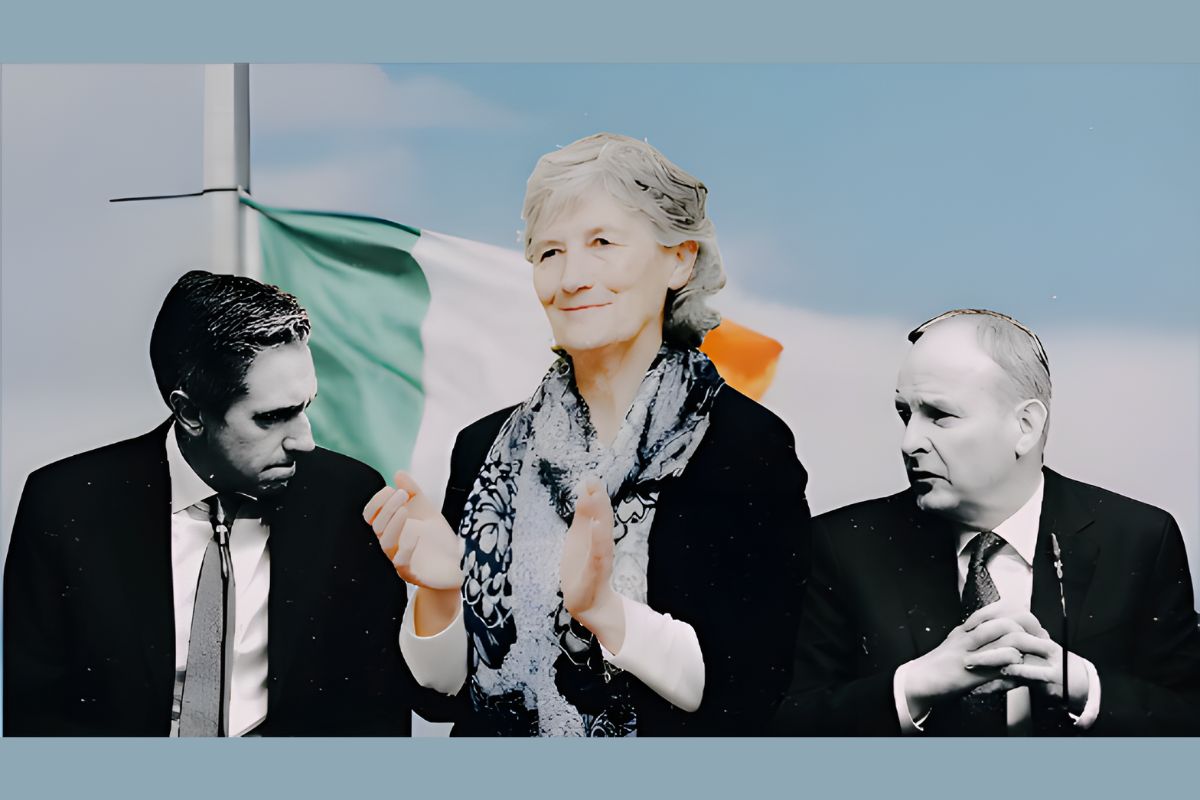British Prime Minister, David Cameron uses words such as “shocking” to refer to the activities of his own security forces then you know something is up. He was responding to the publication of the de Silva report, a review of the papers accumulated from different investigations carried out by different agencies of the British state into the death of Pat Finucane, which show that there was indeed collusion between the British state and those who murdered him back in 1989.
British Prime Minister, David Cameron uses words such as “shocking” to refer to the activities of his own security forces then you know something is up. He was responding to the publication of the de Silva report, a review of the papers accumulated from different investigations carried out by different agencies of the British state into the death of Pat Finucane, which show that there was indeed collusion between the British state and those who murdered him back in 1989.
However, in an attempt to play down the role of the state, the same report states that there was “no overarching state conspiracy”. That is laughable as part of the same report points out that there had been “a wilful and abject failure by successive Governments.” The de Silva report enumerated the following points, which confirms that the state played a role far beyond what they would like to admit:
- Employees of British state organisations played a key role in the murder of Pat Finucane.
- There was a failure to properly investigate the murder, and a failure to arrest and interview key loyalist paramilitaries.
- Senior British Army Officers deliberately lied during investigations.
- The Royal Ulster Constabulary seriously obstructed the investigation.
- 85% of loyalist paramilitaries ‘intelligence’ originated from the British security forces.
- There were extensive ‘leaks of police information to loyalist paramilitary organisations.
- MI5 new of the threats against Finucane’s life but failed to protect him.
Pat Finucane was a defence lawyer for mainly republicans accused of activities against the state in the North of Ireland. Finucane was shot dead while sitting at his family dinner on a Sunday in 1989. His killers were all members of a West Belfast unit of the Ulster Defence Association, a loyalist paramilitary gang.
They were all then, or subsequently later, informers and agents for different sections of British security forces. They carried out the murder two weeks after a junior Tory minister claimed some defence lawyers were active in the IRA. After Finucane’s killing the gang subsequently targeted two other defence lawyers, Oliver Kelly and PJ Mc Grory. Despite knowledge of all three targets beforehand the RUC did not warn any of these individuals.
The British Prime Minister at that time was called Margaret Thatcher. While leader of the opposition her mentor, and closest advisor on security, Airy Neave was assassinated by a unit of the INLA in the car park of the House of Commons. After she became Prime Minister, key players in both the INLA and IRSP were subsequently assassinated by unknowns, but probably by UDA/British intelligence agents. No one has ever been charged in relation to those killings.
Throughout the seventies and eighties it was well known in republican and journalist circles that British intelligence was using and manipulating loyalist gangs to attack republicans and Catholics.
A British military intelligence file from 1973 estimated that between five and 15 per cent of soldiers in the Ulster Defence Regiment – a local infantry regiment of the British Army – were linked to loyalist paramilitaries. The best single source of weapons, and only significant source of modern weapons for loyalist groups, has been the UDR. The British government knew then that more than 200 weapons had passed from the UDR to loyalist paramilitaries, and that these were being used to murder Catholic civilians. The RUC in the seventies referred to these killings as motiveless and denied that they were sectarian. Furthermore the brutal sectarian and sadistic murders of the “Shankill Butchers” took place when the British army had rings of steel around Belfast and yet the murders continued. Furthermore, the same British Army refused to break the Loyalist lock out in 1974 which lead to the fall of the then power sharing Government in the north. Shades of the 1914 Curragh Mutiny!!
And yet the British establishment claims to be shocked by the revelations in the De Silva report. They should not have been. Historically the British establishment used murder gangs, shoot to kill policies, sectarian, religious and racist divisions, massacres, assassins, double agents, torture, rape and pillage to impose the will of the British Empire on over 1/3 of the world. That is what the Empire was built upon and the flag of that Empire, the Union Jack, commonly referred to as the Butcher’s Apron in nationalist areas of the North, is such a symbol of division.
The conscious whipping up of the Protestant working class by the two main pro-unionist/capitalist parties through the distribution of over 40,000 leaflets targeted at the middle of the road Alliance Party has lead to an orgy of sectarian intimidation, violence, including petrol and pipe bomb attacks on political opponents, rabble rousing and the appearance of a BNP financial supporter addressing a mass rally of unionists in front of Belfast City Hall. At a time of deep recession and the pauperisation of huge swathes of working class areas it is tragic, but not surprising, to see the working class diverted by the issue of flags and turning their hatred inward instead of against the system that perpetuates poverty, exploitation and hatred.
The full responsibility for that rests clearly with the British establishment. Their actions throughout the conflict in Ireland show that unlike the public image they put out abroad as neutrals, holding the line between two warring factions they are instead the instigators: instigators of murder, and instigators of sectarian conflict.
As part of the Weston Park Agreement which led to power sharing in the North, the British agreed to five Public Enquiries. Four were held but no agreement could be reached on the Finucane issue because it went to the heart of the British establishment.
However, under constant pressure from both MI5 and the Ministry of Defence several British Governments crumbled, failed to establish a Public Enquiry and eventually Cameron set up a review of the papers connected to the Finucane killing. The review was subsequently carried out by Sir Desmond de Silva, QC.
This was against the wishes of the Finucane family, Northern Nationalists and Republicans and the Irish Government. But of course those wishes were ignored.
Moreover, during that review only seven people were interviewed out of a possible total of thousands. Documents were redacted and permission had to be sought and explained to MI5, why documents were being reviewed. It is no wonder the Finucane family have called the review “a sham… a whitewash… A confidence trick.”
However, despite this there were some telling revelations within the report. The Forces Research Unit, a shadowy undercover unit, had started to encourage the same UDA gang to assassinate Provisional Sinn Fein President, Gerry Adams. This was a number of years prior to the murder of Pat Finucane and at a time when a section of the Provisional movement was seriously considering running down the IRA(P) armed campaign.
As a first step a move was made to stand for elections in the South and take their Dail seats if elected. This move agreed at an Ard-Feis led to a walk out and the establishment of Republican Sinn Fein under the leadership of traditionalists such as veteran republican, Ruari o’Bradaigh.
A previous attempt by the UDA to kill Adams had only wounded him. Now the key British agent inside the UDA, Brian Nelson revealed that the UDA wanted to have another go by planting a limpet type bomb on the roof of Adams heavily fortified car – the only part not reinforced.
However, British Intelligence during the 1981 Hunger strikes had established a direct line of communications with the Adams faction within Provisional Sinn Fein. They immediately took steps to prevent another attempt on Adams’ life based on the fact that “…the assassination of Adams, had it gone ahead, would have been counter-productive, particularly given the delicate balance of power within Sinn Fein” (from British Agents Journal – Irish News, Page 10, 13/12/12)
So it is clear not only that there was long term collusion between the British forces and loyalist murder gangs, but that the British were also manipulating the situation inside the provisional movement to suit their own purposes. The head of the so called “nutting squad” (which deal with so called informers) inside the Provisional IRA was a British agent. A key figure at the heart of Sinn Fein’s policy making was another British agent. So by the end of the 1980’s not only was it British policy to arm, direct and control the activities of the loyalist murder gangs, but they were also at the strategic heart of the Provos, manipulating, directing, controlling and eliminating those who posed serious threats to their interests.
No British review of the events in the North of Ireland will ever find that murder was condoned from the very top of the establishment. The politicians’ hands must be clean. So no evidence will be found that politicians sanctioned murder.
So it is now clear that much of the violence that took place in the north between 1970 and 1998 was micro-managed by the British establishment. It also clearly establishes that the strategy of armed struggle in Ireland is doomed to repeated failures because it can be so easily manipulated.
The only way forward for the working classes in Ireland is through class struggle. At a time of the longest recession in recent history, with mass unemployment, cuts in welfare and the privatisation of national assets, the working classes in both Britain and Ireland are under the hammer and need to unite and resist capitalism. Distractions like flags or armed actions do nothing to advance the cause of the working class. Let us learn the lessons of history.
[Originally published in The Red Plough, Vol. 3, No 11, December 14th 2012, under the title “No overarching state conspiracy”]






